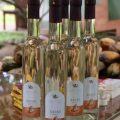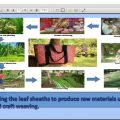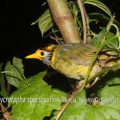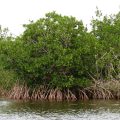A1,060-hectare species-rich mixed forest and 890 hectares of agroforestry areas in Panay will be the site for planting of cacao in a partnership of German GIZ, Cocoa Foundation of the Philippines (Cocoaphil), and government.
A continuing phase of “Forest and Climate Protection in Panay”(FCPP) is being pursued by international cooperation agency Gesselschaft fur Internationale Zusammenarbeit (GIZ) under a new memorandum of agreement (MOA) with Cocoaphil.
This is also in a tieup with the Department of Environment and Natural Resources (DENR) over 2.5 years until 2018.
“The natural forest in Panay is the most important carbon sink in the region. Conservation is therefore vitally important. With local people’s participation, forest land use plans are developed,” according to GIZ.
Cocoaphil President Edward F. David the project will help beef up the country’s cocoa production and seize export market. Cocoa global shortage is predicted at one million metric tons (MT) by 2020.
“We are supporting Department of Agriculture’s Sustainable Cacao Project by addressing cacao shortage through training, consulting services, and provision of planting materials,” said David.
The FCPP II is a continuation of the first GIZ project with the same project name that had mustered support from Panay island’s 20 local government units (LGUs) and their communities. Households have established a total of 1,060 hectares of mixed forest and 890 hectares of agroforestry areas.
The MOA signed by David for Cocoaphil and by Dr. Klaus Schmitt, FCPP GIZ principal advisor, will sustain protection of the Natural Resource Management areas by planting these with cacao, coffee, abaca, and other crops.
Under the cacao program, maximum support to farmers is P10,000 for material subsidy and P4,000 for labor subsidy. The same support is allocated for coffee and abaca, according Bernardo D. Agaloos Jr., GIZ senior adviser.
“A ready market linking the farmers directly to CocoaPhil, Manila Cordage, and Nestle who would purchase all produce that meet quantity and quality at equitable prices beyond the lifetime of the project would be the key factor for success,” said Agaloos.
Planting will be in Ibajay and Libacao in Aklan; Pandan, Sebaste, Laua-an, Bugasong, Valderrama, Patnongon, Sibalom, and San Remigio in Antique; Tapaz, Capiz; and, San Joaguin, Miag-ao, Tubungan, Janiuay, and Lambunao in Iloilo. GIZ, however, has yet to indicate target area of planting for each crop per year.
Cocoaphil will introduce value adding into cacao production processes (processing into chocolates) and also link cacao farmers to markets. It will purchase fermented or dried cacao beans.
The GIZ project will rehabilitate degraded forest lands through natural regeneration and upland farming technologies.
The German government (Ministry for the Environment, Nature Conservation, Building and Nuclear Safety or BMUB) which funds GIZ has supported Panay forest conservation as Panay is a known habitat for certain endangered species. The endangered Dulungan hornbill and Rafflesia plants are known to be found only in Panay.
“Slash-and-burn (Kaingin) practices, unregulated logging, and poaching pose a threat to the entire (Panay) ecosystem,” according to GIZ.
Kaingin has contributed to greenhouse gas (GHG) emissions. But FCPP I is estimated to have contributed to a decrease in GHG (particularly carbon dioxide or CO2) emission totaling 16,800 metric tons (MT) per year. This is accomplished by arresting deforestation. Reforestation activities are further reducing CO2 emission placed at 11,650 MT per year.
“Deforestation of the mountain range is causing erosion and fluctuating water levels. It also jeopardizes rice irrigation and the drinking water supply in low-lying areas.”
With the proper implementation of a land use plan, FCPP is also able to protect the rights and interests of indigenous groups who are empowered to decide on their recommended uses for the lands. Land rights instruments (land titles and ancestral domain land rights) are respected. At the same time, the land use plan protects critical habitats for endangered species.
The project has also been considering use of biofuel in place of pollutant fossil fuel in operating the project. Agricultural wastes will be harnessed as renewable energy resource.
The project will likewise help enable DENR meet commitments under the Convention on Biological Diversity’s Strategic plan 2011-2020. The target involves avoiding extinctions of threatened species and protecting land and seas.
FCPP may enable Philippines to obtain grants funding similar to carbon credits under the REDD (Reducing Emission from Deforestation and Forest Degradation) as administered by the United Nations Framework Convention on Climate Change. German agencies as the Deutsche Forstservice GmbH are involved in REDD functions.
The FCPP I was implemented from 2010 to 2014. It has completed 13 forest land use plans and employed forest guards. More than 15,000 hectares have been designated as special habitat protection areas.
###
For any questions or interview requests, please contact Ms. Maricar Bou, 0910-706-1782, 0939-734-5599, 0917-671-1596.






